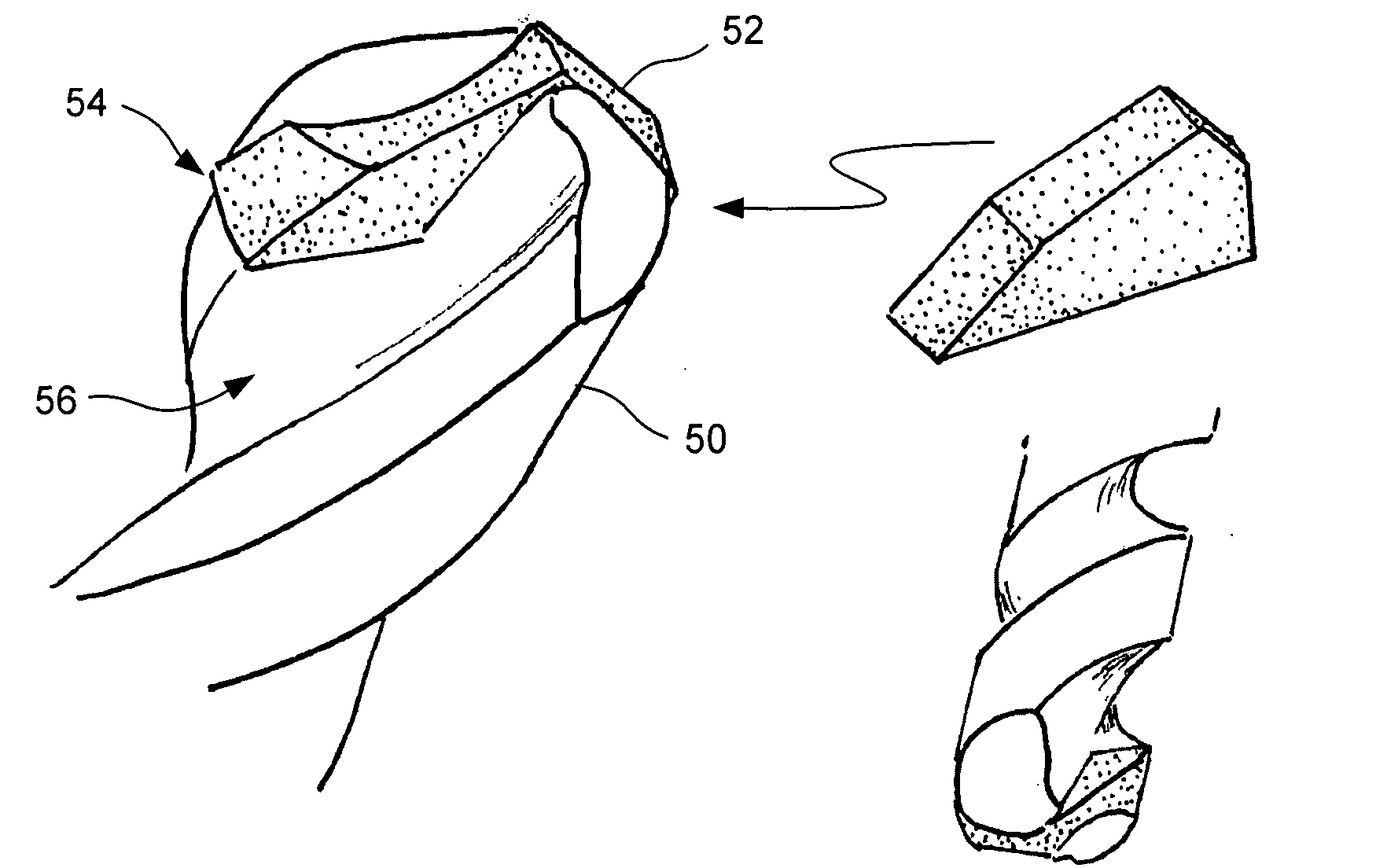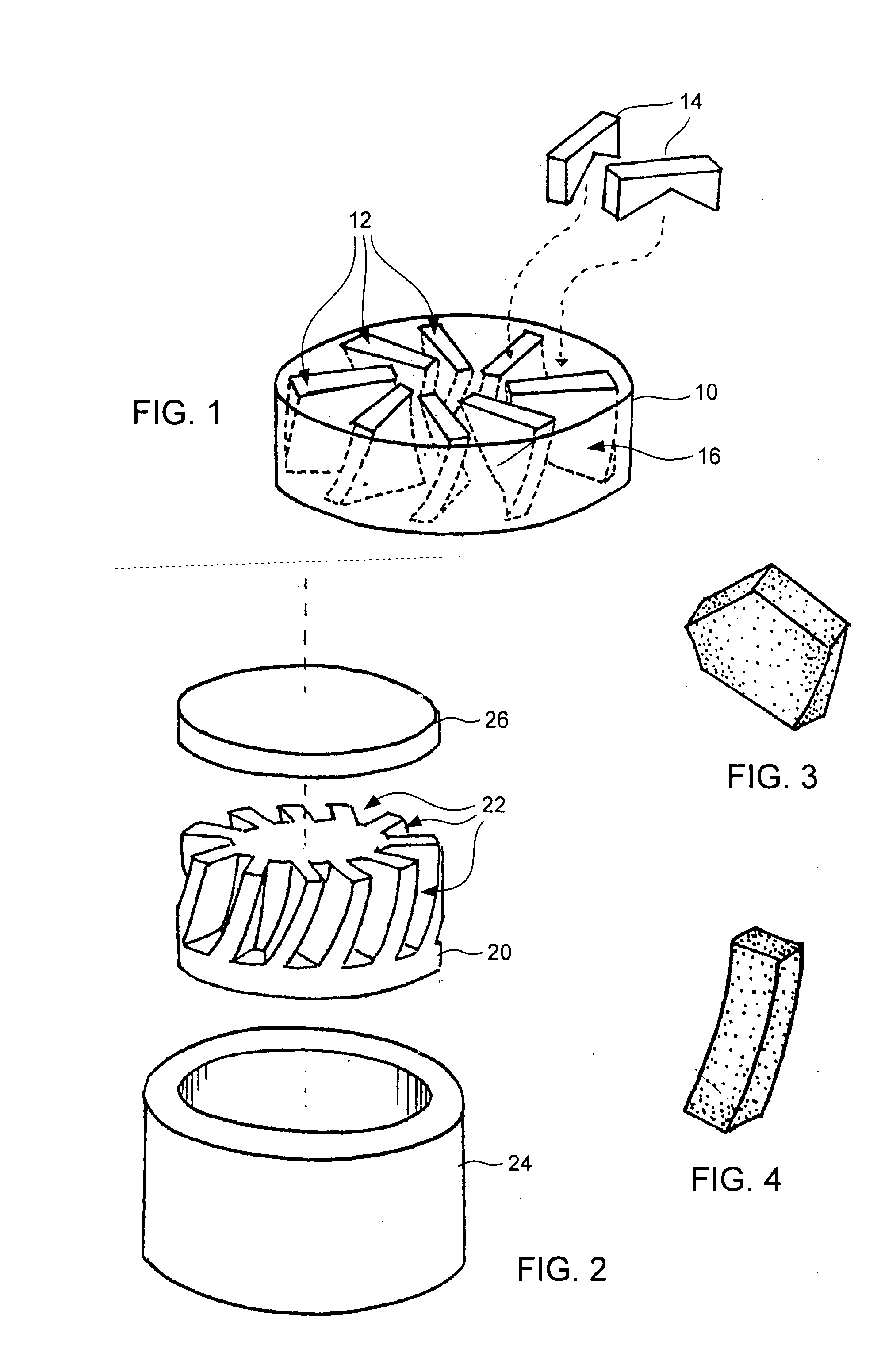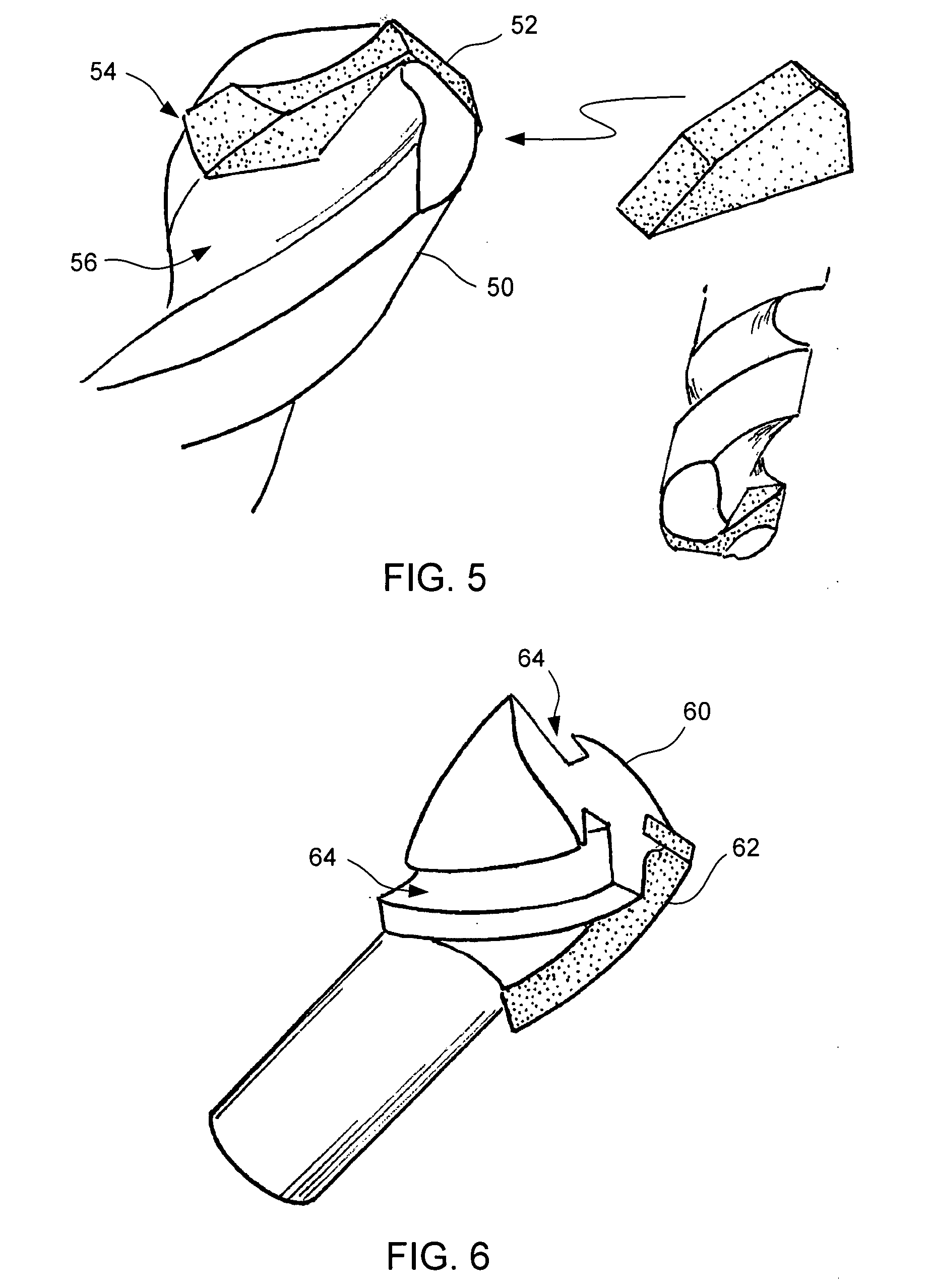Contoured PCD and PCBN for twist drill tips and end mills and methods of forming the same
- Summary
- Abstract
- Description
- Claims
- Application Information
AI Technical Summary
Benefits of technology
Problems solved by technology
Method used
Image
Examples
example 1
[0052]A specially prepared diamond feed was made by granulation steps started from a mixture of diamond having an average particle size of 20˜45 μm, tungsten carbide powder of an average size of 2 μm and a cobalt powder of 1 μm in a content ratio of 75:20:5 wt %. This particulate mixture was compacted, heated (including dewaxing and cementing), and then crushed. This specially granulated and crushed diamond feed was about 70 wt % of 40˜60 mesh composite particulates with a small percentage of 120 / 140 mesh and −325 mesh particulates in 20 wt % and 5 wt %, respectively.
[0053]At the same time, a precursor assembly (similar to FIGS. 1 and 2), tantalum cup, salt bushing, graphite heater tube, and other inner / outer cell parts of HPHT reaction cell were also prepared in a conventional manner to form a precursor assembly. The precursor of multiple helical partitions corresponding to drill tips was made of alumina that was of a sintered grade for sufficient stiffness during HPHT processing. ...
example 2
[0056]Example 1 was repeated with a specially prepared diamond feed but its original diamond feed powders were crushed PCD grits or particulates rather than a typical fine diamond powder of Example 1. Both entirely acid leached crushed PCD particulates and unleached crushed PCD particulates were used in a diamond feed for these examples. The preparation of the final diamond feed and loading into the reaction cup assembly was made under the same procedures as in Example 1. The subsequent HPHT PCD sintering was also conducted as in Example 1. The two types of solid helical shape PCD discs were produced and both materials exhibited the same grey and shiny color appearance on their surfaces.
[0057]One of solid discs was shaped by typical grinding to clean the edges and was then vacuum brazed onto the tip of a twist drill (8 mmΦ drill rod) using a commercially available Ti—Ni—Au brazing alloy at 1100° C.
PUM
| Property | Measurement | Unit |
|---|---|---|
| Electrical conductivity | aaaaa | aaaaa |
| Shape | aaaaa | aaaaa |
| Thermal stability | aaaaa | aaaaa |
Abstract
Description
Claims
Application Information
 Login to View More
Login to View More - R&D
- Intellectual Property
- Life Sciences
- Materials
- Tech Scout
- Unparalleled Data Quality
- Higher Quality Content
- 60% Fewer Hallucinations
Browse by: Latest US Patents, China's latest patents, Technical Efficacy Thesaurus, Application Domain, Technology Topic, Popular Technical Reports.
© 2025 PatSnap. All rights reserved.Legal|Privacy policy|Modern Slavery Act Transparency Statement|Sitemap|About US| Contact US: help@patsnap.com



